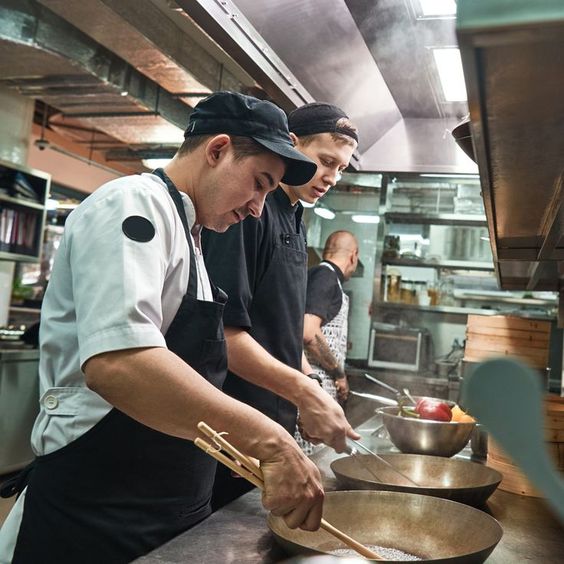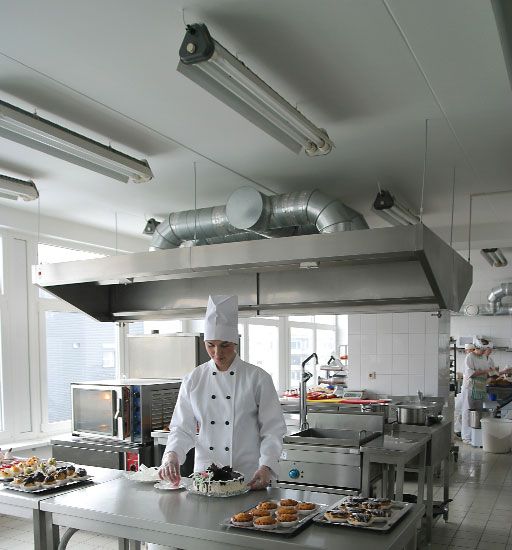
Ron Wong
86-13380258855
sales@rongroup.co

1. Appropriate Hood System
Type I Hoods: These hoods are designed for use with appliances that produce grease and smoke, such as griddles, fryers, and broilers. French cuisine often involves cooking techniques like sautéing and pan-frying, making Type I hoods essential.
Type II Hoods: These are used for appliances that emit steam, vapors, and odors but not grease. Equipment like steamers or dishwashers in a French restaurant would require this type of hood.
2. Sufficient Ventilation Rate
Calculate the ventilation rate based on the kitchen size, the number of appliances, and their type. French restaurant kitchens, which may use high-temperature cooking methods, need robust exhaust systems to handle the increased smoke, grease, and odor production.

3. Make-Up Air System
Introduce make-up air (clean, outside air that replaces the air extracted by the exhaust systems) to maintain balanced air pressure. This prevents negative pressure that can hinder the performance of the hood system and ensure a comfortable environment for the kitchen staff.
4. Proper Ductwork Installation
Ensure that the ducts are designed to effectively transport air and contaminants out of the kitchen. They should be made of suitable materials and configured to minimize bends and length to optimize airflow.
5. Regular Maintenance and Accessibility
Design the system for easy access to facilitate regular cleaning and maintenance. This is critical to prevent fire hazards and maintain system efficiency.

6. Fire Suppression Systems
Incorporate an automatic fire suppression system within the ventilation setup, especially for hoods over cooking surfaces. This is a safety imperative in any commercial kitchen.
7. Compliance with Local Regulations
Adhere to local health and safety codes which can vary significantly. Check the specific requirements for ventilation in commercial kitchens in your area to ensure compliance.
8. Energy Efficiency
Consider energy-efficient models and designs that can reduce operating costs without compromising performance, which is particularly beneficial in high-energy-use environments like kitchens.
9. Noise Control
Implement measures to reduce noise from the ventilation system, as excessive noise can impact the ambiance of the restaurant and the wellbeing of kitchen staff.






Ron Group
86-13380258855
sales@rongroup.co
